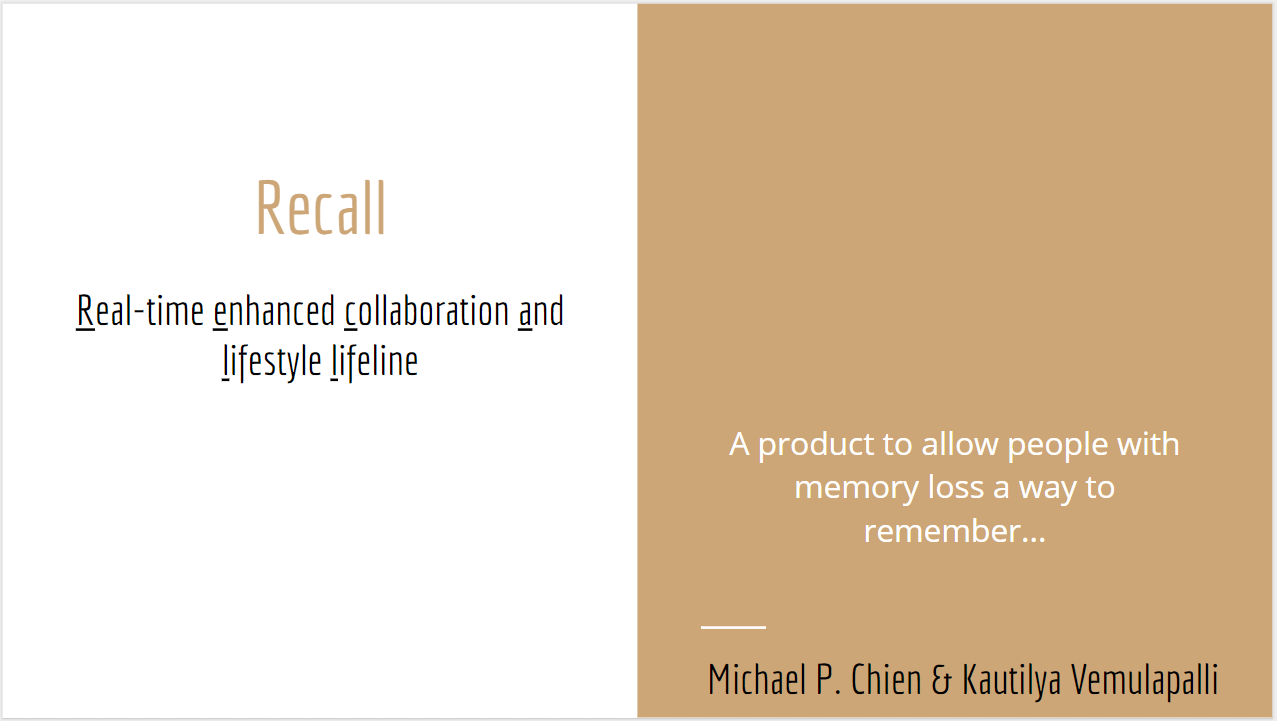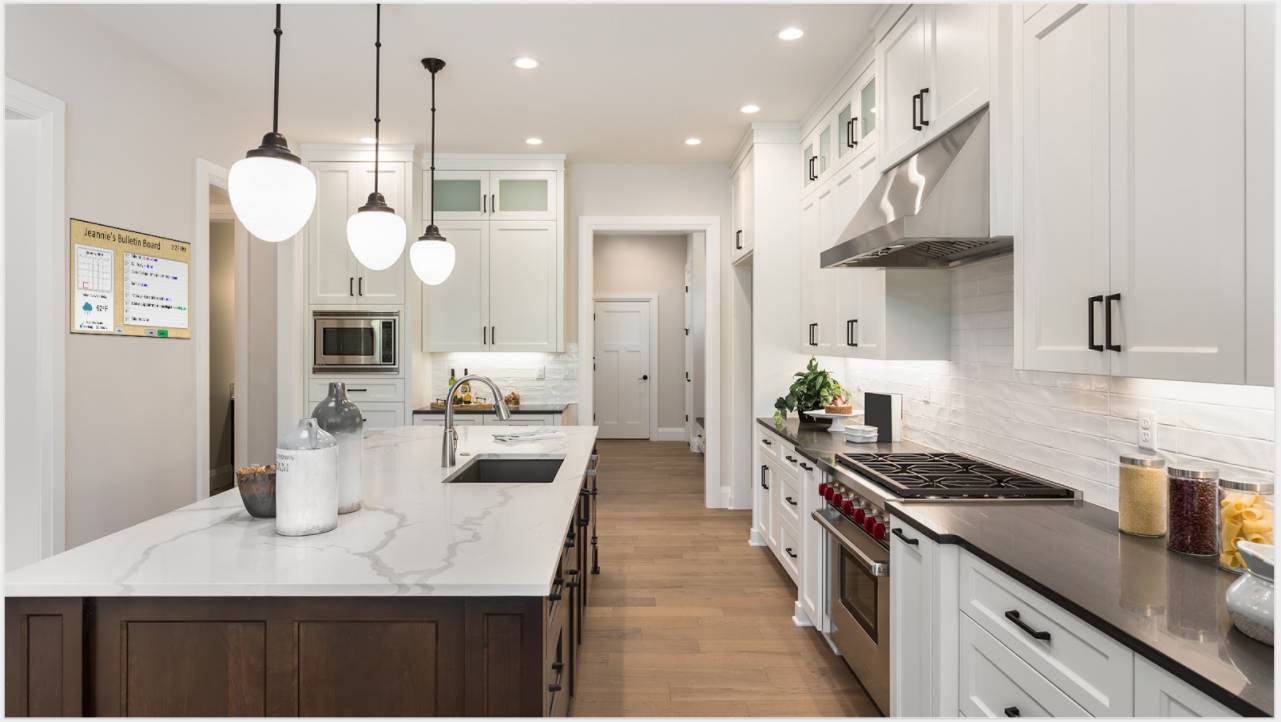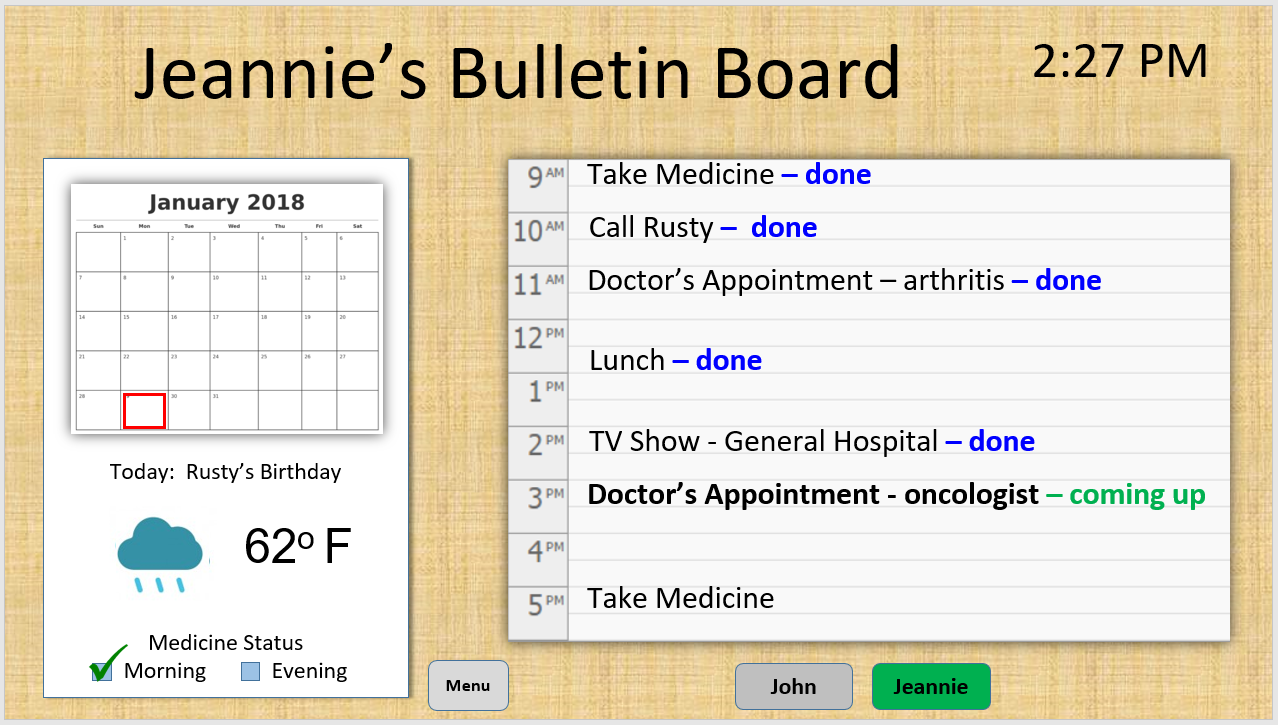- Team Recall – Presentation – Fig 1
- Team Recall – Kitchen-Update – Fig 2
- Team Recall – Display Board – Jeannie – Fig 3
- Team Recall – Display Board – Jeannie – user interface example – Fig 4
- Team Recall – Display Board – John – Fig 5
 Team Members:
Team Members:
Kautilya Vemulapalli, Michael Pang-Chieh Chien
The Redesign:
Imagine the most boring and well-earned lifestyle you can possibly have when you finally retire. You have a nice routine consisting of the same time you wake up to the same time you go to bed. Your breakfast, lunch, and dinner are all scheduled for the same time, with appointments to see various doctors sprinkled throughout the day and week. Now try to imagine yourself or a family member in that same situation, exhibiting symptoms of dementia such as short-term memory or losing the ability to focus and pay attention, and having a harder time trying to maintain that routine. We wanted to reimagine the traditional static bulletin board typically found in the home to help address this very situation.
The redesign we are proposing is a persistent electronic bulletin board with a natural language interface (think Alexa) that will prompt the user their daily schedule. A feature to call the user’s phone to provide a prompt in case the user is not within earshot or acknowledgment range of the display is also provided. The display will also be designed to accommodate multiple primary users. Pre-assigned family member will be able to modify the calendar remotely through a secure link as needed to help the primary users. The display can also be used to record medicine intakes and daily activities. Pertinent sections of these records can be sent to specific doctors before an appointment to simplify the clinic visit. This entire functionality will be given using a simplistic interface that will be designed with the target user in mind
How human-centered and human-factors concepts guided your team:
“Memory does not comprise a single unitary system, but rather an array of interacting systems, each capable of encoding or registering information, sorting it, and making it available by retrieval. Without this capability for information storage, we could not perceive adequately, learn from our past, understand the present, or plan for the future.” From Essentials of Human Memory by A. Baddeley (1999)
The goal of our product is to enable an older population with dementia to maintain their lifestyle by providing a simplistic persistent visual and audio daily activity tracker and reminder system to help keep track of their daily activities.
We followed the elements of a human-centered design by focusing on the need of the user, capabilities, and behavior. Through an informal survey with our friends, we identified a need for a persistent memory aid to help his mother’s short-term memory problems resulting from dementia. In this specific case, immediate family members were living in different towns across the country and his mother and father were still living in their own home.
We used the skeuomorphic design concept when developing the user interface of Recall to foster a sense of familiarity with the traditional bulletin board. Recall affords information sharing via the graphical display as seen in the included photos. Since the daily schedule is the most important aspect, we wanted to ensure it receives prominent space for increased visibility.
We identified audio and visual outputs from the system as signifiers to the user, to help prompt them to their next activity. This includes audio prompts from the system itself, visual indicators on the calendar view as well as options to project notification on the television screen or call them, if they are in a different room. We wanted to ensure that multiple ways of entering and receiving information are available to the user, depending on the comfort level their comfort level. Recall gathers daily information via audio and touch screen interface to maximize usability of the system.
A voice-enabled system allows for the natural voice interaction with the user that is initiated with an audio prompt to improve the human machine interaction. Audio response to confirm the result of the interaction and visual depiction on the bulletin board will help reinforce the schedule. For users who are more comfortable with the traditional landline phone interface, an option is available for them to have that interaction via the phone. For those users who prefer a touch-based interface, we also take into consideration Fitt’s law for the careful placement of buttons to ensure users maintain accuracy when going through the menu options.




